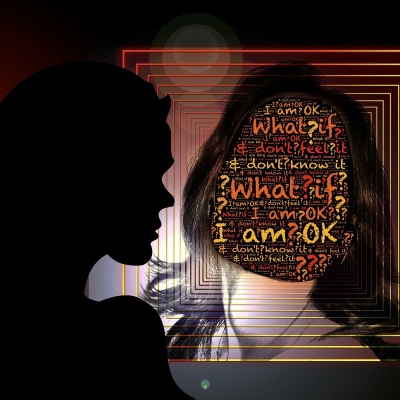
We’ve all wondered what it would be like to be someone else… Imagine increasing your ability to understand and predict the thoughts, feelings, and even the intentions of others. Welcome to the ‘Theory of Mind’ or ‘ToM’.
This crucial ability develops in early childhood and it continues to develop, becoming more refined throughout your life. Theory of Mind is crucial for successful social interactions.
ToM allows us to understand the many complexities of social interactions… Helping us understand why someone might say one thing but actually mean another thing. Like when someone says ‘No’ in a sarcastic tone, really meaning Yes!
Theory of Mind: Taking a Walk in Another’s Shoes
Theory of Mind also helps you predict how someone might react to a situation… By understanding the mental states behind someone’s actions, you can better predict how they’ll behave and explain why they did something.
It’s like having a mental model of another person’s mind!
Ready to take a trip down the rabbit hole and explore the fascinating connection between ASC’s and ToM?
Theory of Mind in Altered States of Consciousness
Our ToM can be significantly impacted when we use different practices and focusing techniques inside Altered States of Consciousness… Thereby increasing our ability to understand ourselves and others.
Altered Perceptions…
ASC’s encompass a huge range of different experiences: from meditation and hypnosis to plant medicines and near-death experiences. In these altered states, our normal way of perceiving and understanding the world is altered.
Sensory experiences become more vivid and rich… Our sense of time and space may warp… Connection to ourselves and the world can feel profoundly different… and great insights can happen.
Loving-Kindness Meditation
This meditation practice involves cultivating feelings of kindness and compassion towards oneself and others. LKC meditation increases the practitioners ability to feel empathy, leading to a better understanding of other peoples emotions and motivations… giving insight into their ‘Mind’.
Mindfulness
Mindfulness is a practice of focusing your attention on the present moment without judgement… When we’re less caught up in our own thoughts and feelings it allows us to be more aware of what’s happening around us… Including the emotions and feelings of others.
By observing someone else’s behavior (without judging them), we start to see things from their perspective. Similar to many types of meditation, regular mindfulness practice can cultivate empathy and compassion, both crucial for ToM.
Hypnosis
Hypnosis puts a person in a state of focused attention and heightened awareness. Hypnotic techniques can be used to enhance perspective and understanding of other peoples point-of-view, a key aspects of ToM.
Guiding people through scenarios from another person’s perspective, having them vividly image themselves “in another’s shoes” can help to improve their understanding of emotions and motivations.
Neuro-Linguistic Programming (NLP)
Good NLP Trainings teach people sensory acuity skills, how to be more attuned to nonverbal cues and emotional states of others, thereby improving ones ToM.
Truly understanding someone’s perspective, their joys and motivations allows you to create more meaningful relationships, or tailor your communication for better clarity.
When you can see the situation from another person’s point of view, it makes it easier to find solutions that work for everyone. A strong ToM is key to a sharper Emotional Intelligence.
Exercise: Increasing Your Theory of Mind
Perceptual Positions is an exercise from the toolkit of NLP which allows you to gain deeper insights into another person’s Mind/Mindset, to better understand them and communicate with them.
So to the Exercise: Perceptual Positions
Pick a situation, it could be a disagreement, a negotiation, or just an interaction you want to understand better.

1st Position (In Your Shoes): Close your eyes and imagine the situation. What were you thinking and feeling? What did you want?
2nd Position (In Another Person’s Shoes): Now imagine you’re in the other persons shoes… See you and the situation from their eyes… What are they thinking and feeling? Why did they act that way?
3rd Position (the Fly on the Wall): Step outside the situation completely. Observe the interaction like a neutral party. Notice any patterns in communication, unspoken feelings, or potential areas of conflict.
Back to 1st Position: Come back to your own perspective. See if your understanding of the situation has changed.
Take a time over this for real insight and clarity.
“Walking in another man’s shoes” is a common phrase capturing the essence of Theory of Mind… and brilliantly explored in this simple exercise. Try it out today with a situation you wish to improve and notice what insights you gain by having this increased ToM.
Interested in learning and exploring more… Find Out about becoming a Licensed Hypnotic Practitioner and Learn the Art & Science of Hypnosis and NLP.

Pingback: Restricted Environmental Stimulation Therapy (REST): Hallucinations &'Mystical Experiences'